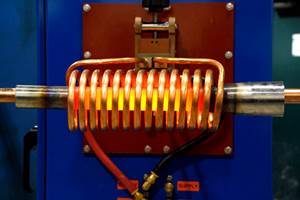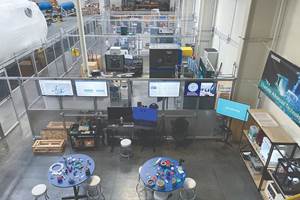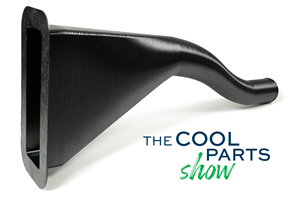Precision Without Deposition
Is it possible to 3D print with carbon fiber fabric? It is, except that “printing” is not the right word. This additive process builds parts by stacking the carbon fiber sheets. The result is composite parts that don’t need tooling—but are strong enough that they could be used as tooling.
3D printers building functional parts in plastic share a characteristic in common. Chicago-area inventor Robert Swartz would argue that they share a limitation in common. That is, these machines require material to be forced through a head, and from there layered onto the part. The head, and the need to apply material this way, affects what materials can be used and therefore constrains the range of material properties that can be achieved. Swartz has a different idea.
His company, Impossible Objects, was founded to develop a process he calls “composites-based additive manufacturing,” or CBAM. In this process, thermoplastic material is used, but it is not applied through a moving head. The process recently manufactured a carbon fiber component for an unmanned aircraft that successfully replaced a part prone to breaking when the aircraft landed.
CBAM builds carbon fiber parts by stacking sheets of the material. It can also build parts out of Kevlar, or any engineered material obtainable in sheets. Each successive sheet gets a fluid applied to it in a precise profile generated from the cross-sectional layer of the CAD model. Only this step involves a digitally controlled moving head. The fluid, a noncritical ingredient, temporarily holds in place a thermoplastic, which is applied onto the wet silhouette in a powder. Successive sheets with plastic powder adhering to the part profiles in this way are stacked until the layers are complete. The entire stack is heated so the plastic melts between layers, and mechanically compressed to bond the sheets and plastic together. Then, after the part solidifies, the unbonded sheet material around it is removed by bead blasting. The result, says Swartz, is a workpiece that is up to 10 times stronger than what plastic 3D printing can achieve—produced without any precision-controlled deposition or cutting in order to apply or shape the material. (See video of the process on the company's site.)
The process is currently being applied manually. Impossible Objects is functioning as a service bureau today, supplying functional CBAM parts to end users. But the ultimate aim is to produce a commercial, sheet-fed CBAM machine, says company CEO Lawrence Kaplan. It’s too early to announce when that machine will be available, he says, but the project is actively underway. In addition, components for automating the process will be introduced into the current service business as they are developed.
Yet even for now, the manual process—in which employees place sheets by hand on a gantry machine that applies the fluid, and manually dust these sheets with powder—is not as ponderous as it might sound. A batch of several 3D-printed parts covering the area of an 18-inch square of sheet material could be produced through this manual process in 6 to 8 hours. Thus, the lead time of this process is already competitive with conventional 3D printing. It’s just the labor requirement that has to be improved.
The company’s success in manufacturing for an unmanned aircraft involved a component that sees high stresses during landing. CBAM delivered a part resilient enough to withstand the required duty, and the part is now flying on several planes. Mr. Swartz says this is an example of the right kind of application for the process—a functional part for which the strength and material properties matter. Unlike many 3D printing processes, this process is not directed toward design models, except where those models themselves are functional.
An example of this is wind-tunnel models, which is another application for which CBAM is being used. 3D printing often can’t produce effective wind-tunnel models, because the force of the testing can break or deform these parts. Instead, manufacturers invest in production tooling to create wind tunnel models that are very near to production components. But as an alternative, a truck maker recently used CBAM to quickly produce various iterations of a blower fan that, in carbon fiber, were strong enough to hold up to the testing.
Larger ovens and larger presses will eventually let Impossible Objects scale beyond its current maximum part size, which is about 9 inches diameter by 4 inches high. One promising application for a scaled-up version of this process is the subject of a collaborative research and development agreement with Oak Ridge National Laboratory. The company says Oak Ridge is exploring the use of CBAM to make tooling for composite lay-up structures. Today, tooling for composites is often made from Invar, a metal alloy that is challenging to machine, but used because it has the same low coefficient of thermal expansion as carbon fiber composite. Invar allows the tooling to follow the part in and out of the oven. However, if the tooling itself was made from the same carbon fiber as the part, then this tool obviously would also have the same low coefficient of expansion. Therefore, with CBAM, a tool demanding difficult machining could be replaced with a tool requiring not only no machining, but also no critical machine movement at all in applying this tool’s composite material.
Related Content
3D Printing Supports Induction Coils — and Emergency Needs
As a participant in Michigan’s Project DIAMOnD initiative, Tucker Induction Systems received a 3D printer to use any way it saw fit, provided the capacity remains available in case of emergency. Use cases and lessons learned as part of this distributed manufacturing network.
Read MoreAdvancing Additive Manufacturing With a CATCH and Release Approach
Solutions for energy efficiency, sustainability, part repair and more are developing at Siemens’ Charlotte Advanced Technology Collaboration Hub (CATCH) in North Carolina.
Read MoreEvaluating the Printability and Mechanical Properties of LFAM Regrind
A study conducted by SABIC and Local Motors identified potential for the reuse of scrap reinforced polymer from large-format additive manufacturing. As this method increases in popularity, sustainable practices for recycling excess materials is a burgeoning concern.
Read MoreAircraft Ducts 3D Printed in Composite Instead of Metal: The Cool Parts Show #68
Eaton’s new reinforced PEKK, tailored to aircraft applications, provides a cheaper and faster way to make ducts compared to formed aluminum.
Read MoreRead Next
Video: Intelligent Layering Metal 3D Printing at 3DEO
Contract manufacturer 3DEO delivers metal parts using Intelligent Layering, a binder jetting-like 3D printing process the company developed and operates internally. Here’s how it works.
Read MoreTo Improve Performance of Compression Molded Composites, Add 3D Printed Preforms
9T Labs' Additive Fusion Technology enables the manufacture of composite structures with as much or as little reinforcement as is necessary, using 3D printed continuous fiber preforms to add strength just where needed.
Read More3D Printing Brings Sustainability, Accessibility to Glass Manufacturing
Australian startup Maple Glass Printing has developed a process for extruding glass into artwork, lab implements and architectural elements. Along the way, the company has also found more efficient ways of recycling this material.
Read More
.jpg;width=70;height=70;mode=crop)
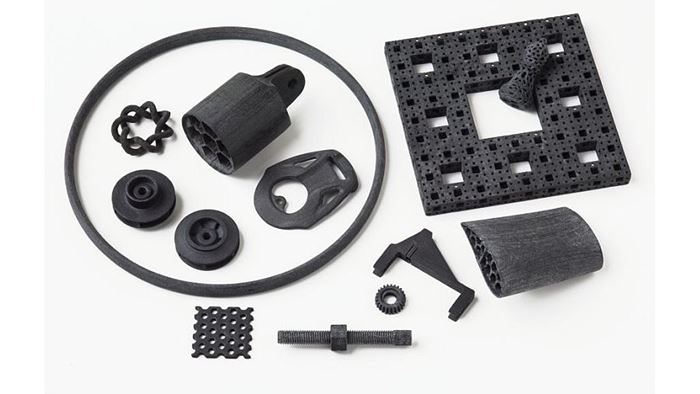
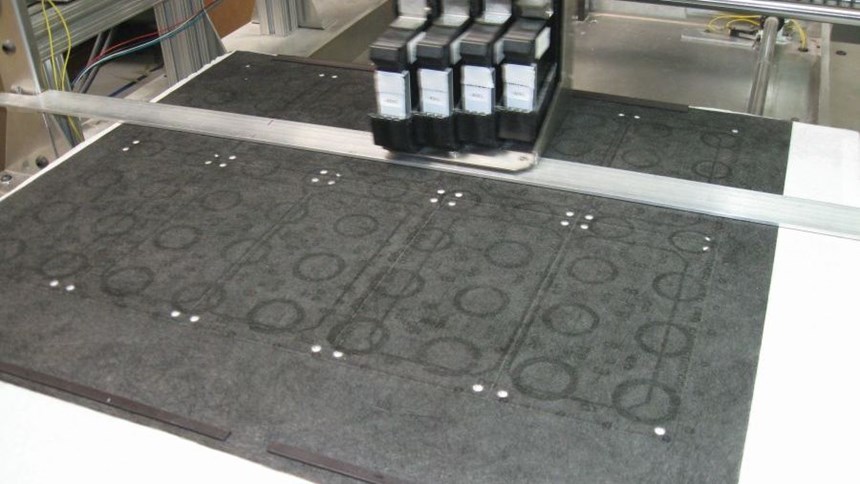










.png;maxWidth=300;quality=90)




